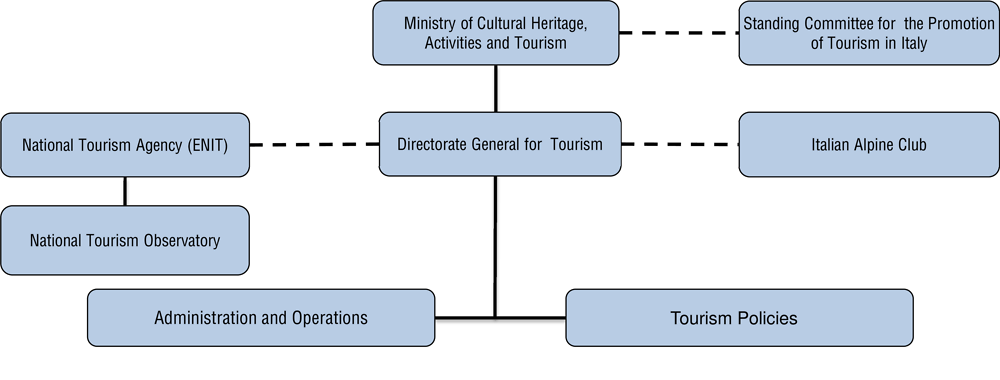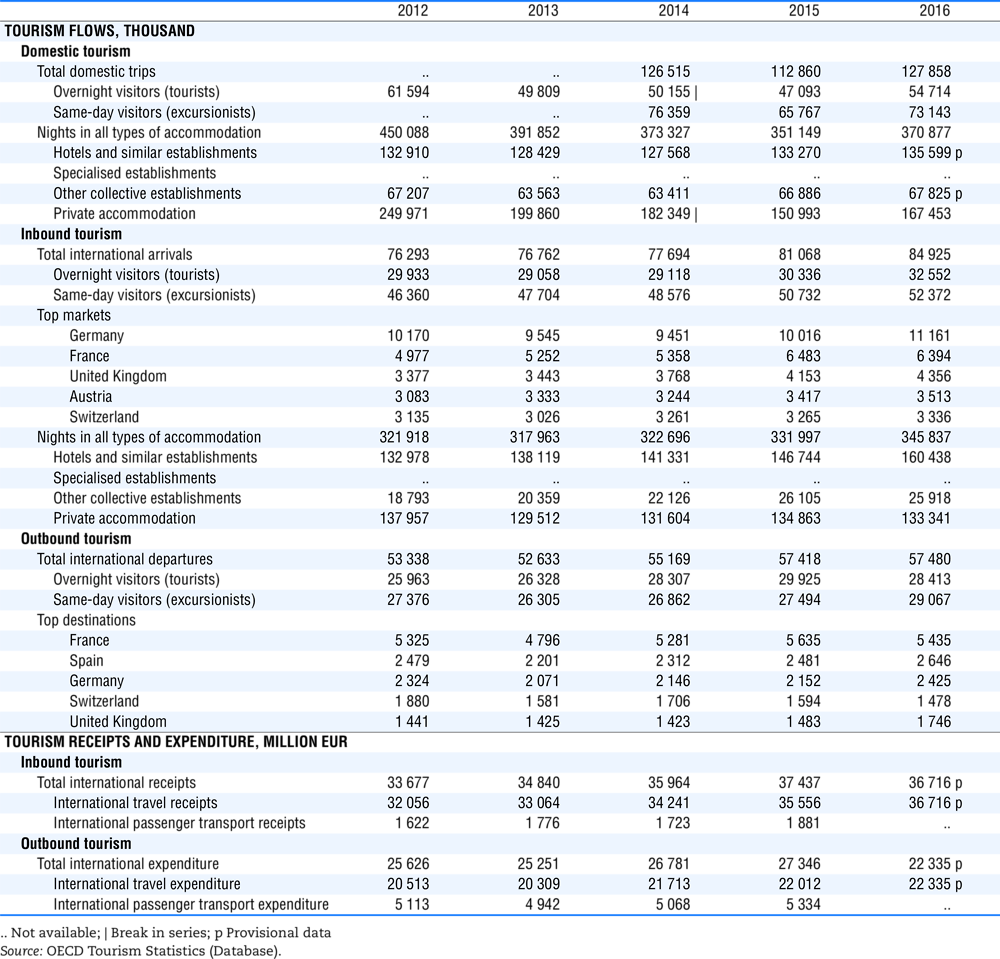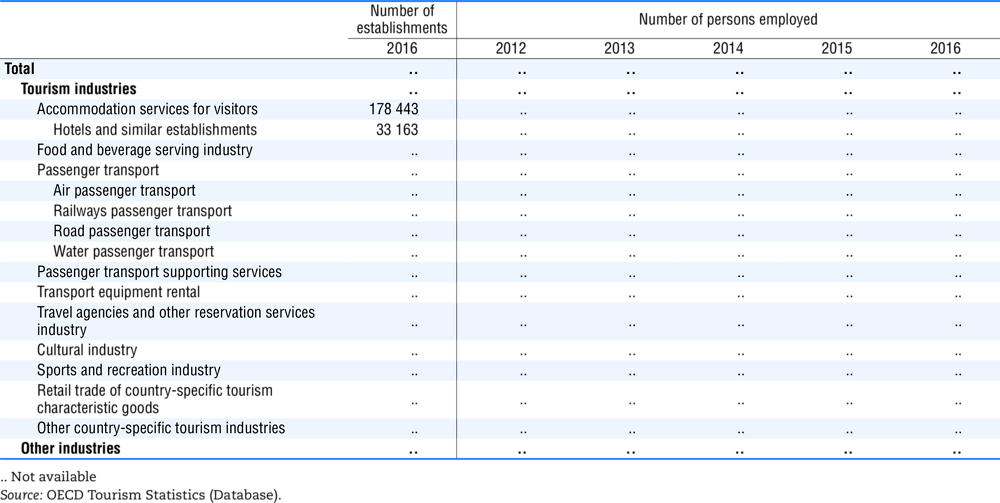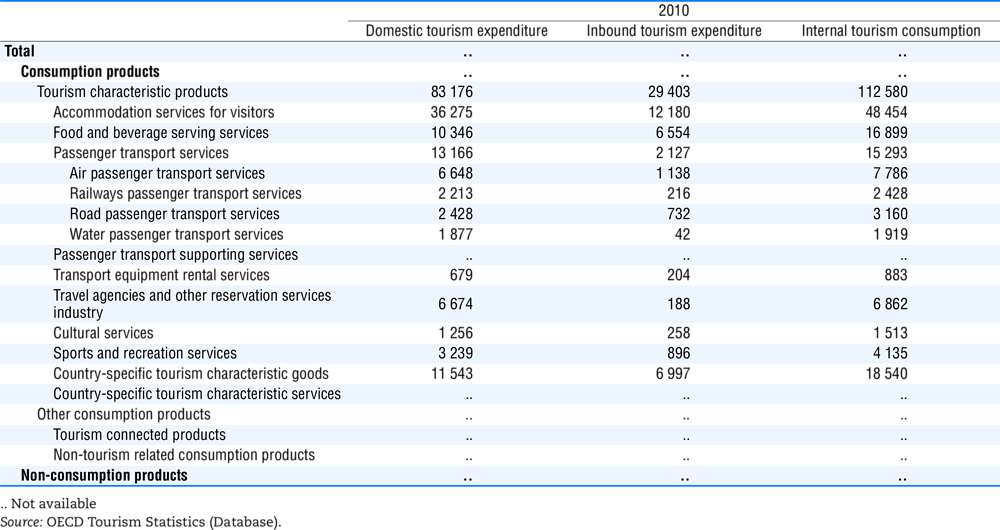Italy
Tourism in the economy
In line with the global trend, data for 2016 shows steady and positive growth for tourism in Italy. The number of inbound visitors and average length of stay continued to increase steadily in 2016. International arrivals totalled 84.9 million, of which 32.6 million were overnight stays, resulting in 160.4 million nights spent in hotels and similar establishments. International overnight stays rose by 9.4% between 2011 and 2016. The top four inbound markets (including both overnight and same-day visitors) were Switzerland, Germany, France and Austria. More than 60% of international arrivals head to the four regions of Veneto, Lombardy, Tuscany and Lazio.
International travel receipts grew at a stronger pace (3.3%) than Italian exports in general (3%) moving from EUR 35.6 billion in 2015 to EUR 36.7 billion in 2016, and confirming the leading role of tourism in the Italian economy. Travel receipts accounted for 6.3% of total exports in 2016.
Expenditure by Italian outbound tourists increased from EUR 22 billion in 2015 to EUR 22.3 billion in 2016. Italy’s balance of tourism payments therefore remains positive and 6.2% higher than for 2015.
A total of 54.7 million domestic overnight trips were made in 2016 (an increase of 16.2% on 2015), with 135.6 million nights spent in commercial accommodation (up 1.7% on 2015).
Tourism makes an important contribution to the Italian economy, accounting overall for 11.8% of national GDP and 12.8% of total national employment in 2015.
Tourism governance and funding
The legislative framework for tourism in Italy involves the Ministry of Cultural Heritage, Activities and Tourism (“the Ministry”), the Permanent Conference for Relations between the State, Regions and Autonomous Provinces of Trento and Bolzano, and the Joint Conference of Regions and Municipalities.
While the Directorate-General (DG) for Tourism in the Ministry sets the strategic policy agenda, the Italian Constitution devolves several key activities to the regions, including regulating tourism businesses, developing strategic marketing activities and managing European Structural Funds. Provinces and municipalities can also issue local regulations for the tourism sector.
The DG for Tourism, beyond its major task to develop and launch national tourism policies in coordination with regions and autonomous provinces, supervises the National Italian Tourism Agency (ENIT) and the Italian Alpine Club. The DG for Tourism also manages all tourism activities that fall outside the competence of the regions. It provides aid and incentives to develop tourism demand, it delivers certifications and authorisations to foreign professionals, it manages relations with international organisations, and it participates in the development and adoption of European Union legislation.
The role of ENIT is to market and promote Italy as a tourist destination. A 2015 statute transformed ENIT from a public body into a public economic entity. The Board of Directors includes two members appointed by the Minister. ENIT may enter into agreements with the regions and autonomous provinces, local authorities and other public bodies.

Source: OECD, adapted from the Ministry of Cultural Heritage, Activities and Tourism, 2018.
Tourism receives support from the Culture and Innovation 2014-20 programme financed by European Union Structural Funds. Of the total budget of EUR 490 million, a large proportion is allocated to the development of 60 cultural centres in five southern regions: Campania, Apulia, Basilicata, Calabria and Sicily.
The government-controlled Tourism Investment Fund, launched in 2014, and managed by the National Investment Bank Cassa Depositi e Prestiti, has an increased ceiling of EUR 250 million, of which EUR 100 million had been invested by 2016. The fund operates as a bridge between public assets in need of development and the private real estate market.
Tourism policies and programmes
The government is reshaping its plan for the tourism economy, putting it at the heart of national policies. During 2016, the national tourism industry and all its public and private stakeholders came together to generate a new National Strategic Plan for Tourism (Piano Strategico del Turismo – PST) for the period 2017-2022. The Plan brings together all tourism operators in Italy with a consistent and coordinated approach, providing a clear framework to improve decision-making in the sector. It is based on key drivers such as technological and organisational innovation, skills development, and quality services. These aspects are integrated with a lasting and sustainable approach to Italy’s environmental and cultural heritage.
The Plan’s vision is to revive Italy’s leadership in the tourism market and boost its contribution to the economic, social and sustainable development of its local areas. It focuses on four major themes, namely, territory and heritage, competitiveness and employment, putting the tourist at the centre, and integration and interoperability, with the strategic principles of sustainability, innovation, and accessibility, cutting across each (Box 1.5).
The Ministry has signed joint protocols with the following authorities:
-
The Ministry of Economic Development (MISE) and AGID (Government digital agency) for the creation of new digital services for tourism, including national wifi and large bandwidth networks.
-
The Ministry of Infrastructure and Transport, with a Special Plan for Tourist Mobility.
The Special Plan for Tourist Mobility has been signed between the Ministry of Culture and Tourism and the Ministry of Infrastructure and Transport. The Plan provides an important framework for commitment and collaboration to improve mobility for tourism by setting common goals with sector operators and key stakeholders. EUR 372 million is available to spend over the period 2016-2024, including EUR 90 million for investment in a “soft mobility” network (e.g. cycle tracks, tourist rail services) and EUR 60 million for Paths (Cammini), such as the Via Francigena and the Via Appia.
2016 has been the year of The Italian Paths (I Cammini d’Italia), with the objective of enhancing the value of cultural routes. Initiatives have taken place throughout the year, including the creation of a directory of paths and a website (www.camminiditalia.it).
A Tax Credit system for the tourism sector (the “Art Bonus Decree”), which was approved in 2014, has been refinanced with EUR 460 million until 2020 with special regard to the refurbishment and modernisation of tourism establishments.
The revived collaboration between the public and private sectors in tourism features a new support system of EUR 12.7 million for businesses and enterprises with a special focus on networks and start-ups.
Great emphasis has been placed from a promotional perspective on extending the national offer away from major attractions (cultural cities like Rome, Florence, Venice, and Milan) towards the diversity and plurality of landscapes and destinations. Among these initiatives, the first mapping of Italian villages (I Borghi più belli d’Italia) has been developed.
Finally, a new hotel classification system with a special focus on sustainability and accessibility is currently being approved.



